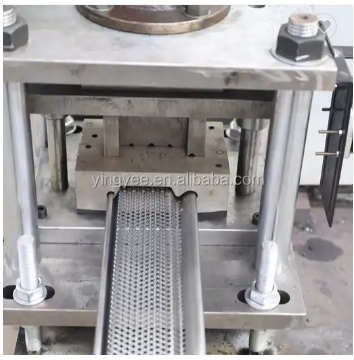
The Importance and Functionality of Drywall Forming Machines
In contemporary construction, drywall has become a ubiquitous material for building interiors. Its versatility, ease of installation, and cost-effectiveness have made it the preferred choice for both residential and commercial applications. As the demand for drywall continues to rise, the need for efficient production techniques has made drywall forming machines an essential component in the manufacturing process. This article explores the significance, functionality, and advancements of drywall forming machines in modern construction.
Understanding Drywall
Drywall, also known as gypsum board or plasterboard, consists of a layer of gypsum sandwiched between two sheets of heavy paper or fiberglass. It is favored for its fire-resistant properties, sound insulation, and smooth finish, which makes it an ideal wall and ceiling material. Producing drywall on a large scale requires precise machinery capable of handling various materials and processes efficiently.
The Role of Drywall Forming Machines
Drywall forming machines play a crucial role in the production of gypsum boards. These machines automate and streamline the process, allowing manufacturers to achieve higher output rates with minimal labor. Essentially, the process involves several key steps mixing the raw materials, forming the board, drying, cutting, and packaging.
1. Mixing The first step involves combining gypsum, additives, and water to create a slurry. This mixture is carefully proportioned to ensure the drywall meets the required specifications for strength and fire resistance.
2. Forming The mixed slurry is then poured onto a continuous sheet of paper that serves as the liner for the drywall. Drywall forming machines utilize rollers and presses to spread the slurry evenly, ensuring consistent thickness and density throughout the board.

3. Drying Once formed, the boards are passed through drying chambers, typically equipped with hot air systems, to remove excess moisture. Drying is a critical step, as it solidifies the gypsum and contributes to the board's overall strength.
4. Cutting and Packaging After drying, the boards are cut to size, and they can be further processed for special applications, such as textured finishes or enhanced insulation. Finally, the finished products are packaged for shipment to suppliers and construction sites.
Advancements in Technology
Recent advancements in drywall forming machines have significantly improved efficiency and sustainability. Modern machines are equipped with automated systems that monitor each stage of the production process, ensuring that quality control is maintained and reducing waste. For instance, advanced sensors can detect variations in thickness or moisture content, automatically adjusting the process to maintain standards.
Moreover, innovations in material technology have led to the development of greener drywall products. Some machines now allow for the incorporation of recycled materials and eco-friendly additives, resulting in boards that are not only high-performing but also environmentally responsible.
Conclusion
In conclusion, drywall forming machines are vital to the construction industry, facilitating the efficient production of this essential material. As construction demands evolve, these machines adapt, integrating advanced technologies that enhance productivity, consistency, and sustainability. The ongoing innovation within this sector not only meets the needs of today’s builders but also paves the way for a more sustainable future in construction practices. Investing in modern drywall forming machines will undoubtedly benefit manufacturers and contribute to the overall efficiency of building projects worldwide.